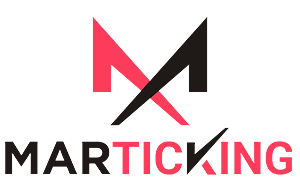In the fast-evolving landscape of digital marketing, crafting a well-thought-out media plan is crucial for achieving success and maximizing the impact of your brand. The digital media mix plays a pivotal role in this plan, determining how and where your message reaches your target audience. In this blog, we’ll delve into four key tips to guide you in planning an effective digital media mix.
1. Understand Your Audience: The North Star of Media Planning
The foundation of any successful media plan is a deep understanding of your target audience. Conduct thorough market research to identify the demographics, preferences, and behaviors of your audience. This knowledge serves as your guiding star, enabling you to choose the right channels and formats that resonate with your audience’s preferences.
Key Actions:
- Create Detailed Buyer Personas: Develop detailed profiles of your ideal customers, considering factors like age, location, interests, and online behavior.
- Analyze Data: Leverage analytics tools to gather insights from past campaigns and user interactions, refining your understanding of audience preferences.
2. Diversify Your Media Mix: Embrace the Power of Variety
The digital landscape offers a plethora of channels and formats to engage your audience. A successful media plan incorporates a diverse mix to ensure comprehensive coverage and appeal to various consumer preferences. Consider a combination of social media advertising, display ads, video content, and search engine marketing to create a holistic and impactful media mix.
Key Actions:
- Explore Different Channels: Investigate platforms like Facebook, Instagram, YouTube, Google Ads, and other relevant channels based on your audience and objectives.
- Mix Paid and Organic Strategies: Integrate paid advertising with organic content strategies for a balanced and effective approach.
3. Align with Campaign Objectives: Precision in Planning
Every media plan should align seamlessly with the broader objectives of your marketing campaign. Whether you aim to increase brand awareness, drive conversions, or promote a specific product, each channel and format within your digital media mix should contribute directly to achieving these goals.
Key Actions:
- Set Clear Objectives: Define specific, measurable, achievable, relevant, and time-bound (SMART) objectives for your campaign.
- Choose Channels Strategically: Select channels and formats that align with your campaign objectives. For instance, use visual platforms for brand awareness and search engine marketing for conversions.
4. Leverage Cross-Channel Integration: Harmonizing Your Message
Achieve a harmonious brand message across your digital media mix by integrating your efforts seamlessly. Cross-channel integration ensures that your audience receives a consistent and cohesive experience, regardless of the platform they engage with. This approach reinforces brand recall and strengthens the impact of your message.
Key Actions:
- Create Unified Messaging: Craft a core message that resonates with your brand values and ensures consistency across all channels.
- Implement Coordinated Campaigns: Plan and execute campaigns that span multiple channels, reinforcing your message and maximizing audience exposure.
Conclusion: Crafting a Symphony of Success
Media planning, especially in the realm of digital marketing, is akin to orchestrating a symphony. The digital media mix serves as the instruments, each playing a unique role in delivering a harmonious and impactful brand message. By understanding your audience, diversifying your media mix, aligning with campaign objectives, and leveraging cross-channel integration, you’ll not only create a successful media plan but also conduct a digital symphony that resonates with your audience, leaving a lasting impact on the digital stage.


